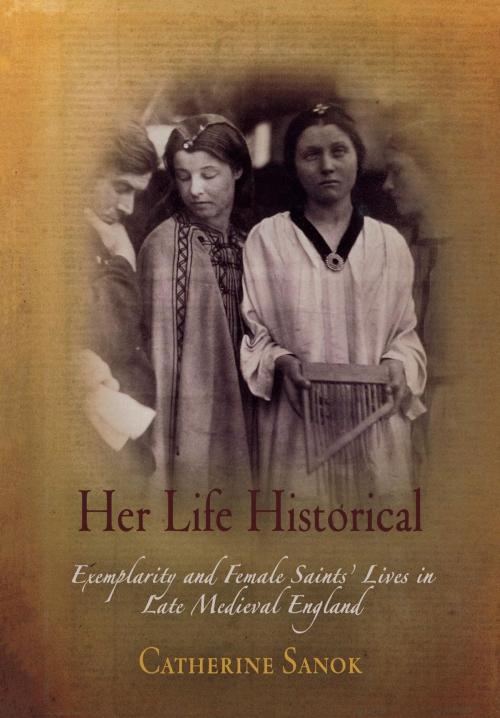Her Life Historical
Exemplarity and Female Saints' Lives in Late Medieval England
Fiction & Literature, Literary Theory & Criticism, Medieval, Nonfiction, History, Religion & Spirituality| Author: | Catherine Sanok | ISBN: | 9780812203004 |
| Publisher: | University of Pennsylvania Press, Inc. | Publication: | April 23, 2013 |
| Imprint: | University of Pennsylvania Press | Language: | English |
| Author: | Catherine Sanok |
| ISBN: | 9780812203004 |
| Publisher: | University of Pennsylvania Press, Inc. |
| Publication: | April 23, 2013 |
| Imprint: | University of Pennsylvania Press |
| Language: | English |
Her Life Historical offers a major reconsideration of one of the most popular narrative forms in late medieval England—the lives of female saints—and one of the period's primary modes of interpretation—exemplarity. With lucidity and insight, Catherine Sanok shows that saints' legends served as vehicles for complex considerations of historical difference and continuity in an era of political crisis and social change. At the same time, they played a significant role in women's increasing visibility in late medieval literary culture by imagining a specifically feminine audience.
Sanok proposes a new way to understand exemplarity—the repeated injunction to imitate the saints—not simply as a prescriptive mode of reading but as an encouragement to historical reflection. With groundbreaking originality, she argues that late medieval writers and readers used religious narrative, and specifically the legends of female saints, to think about the historicity of their own ethical lives and of the communities they inhabited. She explains how these narratives were used in the fifteenth century to negotiate the urgent social concerns occasioned by political instability and dynastic conflict, by the threat of heresy and the changing status of public religion, and by new kinds of social mobility and forms of collective identity.
Her Life Historical also offers a fresh account of how women came to be visible participants in late medieval literary culture. The expectation that they formed a distinct audience for saints' lives and moral literature allowed medieval women to surface in the historical record as book owners, patrons, and readers. Saints' lives thereby helped to invent the idea of a gendered audience with a privileged affiliation and a specific response to a given narrative tradition.
Her Life Historical offers a major reconsideration of one of the most popular narrative forms in late medieval England—the lives of female saints—and one of the period's primary modes of interpretation—exemplarity. With lucidity and insight, Catherine Sanok shows that saints' legends served as vehicles for complex considerations of historical difference and continuity in an era of political crisis and social change. At the same time, they played a significant role in women's increasing visibility in late medieval literary culture by imagining a specifically feminine audience.
Sanok proposes a new way to understand exemplarity—the repeated injunction to imitate the saints—not simply as a prescriptive mode of reading but as an encouragement to historical reflection. With groundbreaking originality, she argues that late medieval writers and readers used religious narrative, and specifically the legends of female saints, to think about the historicity of their own ethical lives and of the communities they inhabited. She explains how these narratives were used in the fifteenth century to negotiate the urgent social concerns occasioned by political instability and dynastic conflict, by the threat of heresy and the changing status of public religion, and by new kinds of social mobility and forms of collective identity.
Her Life Historical also offers a fresh account of how women came to be visible participants in late medieval literary culture. The expectation that they formed a distinct audience for saints' lives and moral literature allowed medieval women to surface in the historical record as book owners, patrons, and readers. Saints' lives thereby helped to invent the idea of a gendered audience with a privileged affiliation and a specific response to a given narrative tradition.















